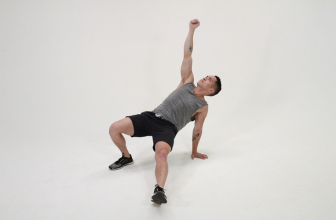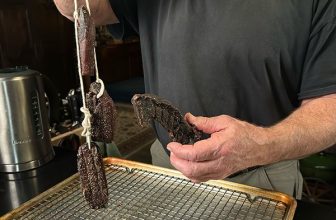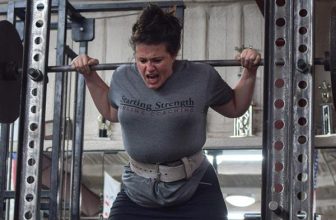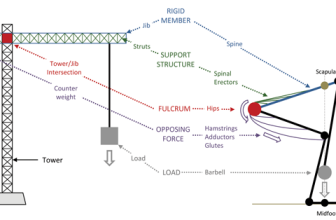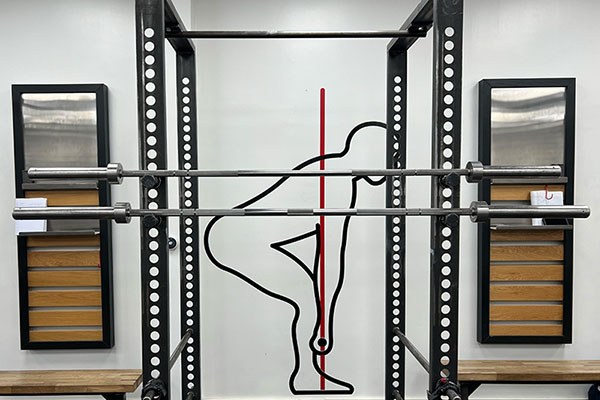
[adinserter block=”2″]
Using the 15kg Barbell Correctly
by Mark Rippetoe | March 19, 2024
When the Women’s Division was
added to Olympic weightlifting, an equipment problem had to be
solved. The standard 28.5mm bar was too fat for most female hands,
especially in the lighter weight classes. So the diameter had to be
reduced. But since a smaller-diameter bar would be “whippier” at
the same length, and would also weigh less, this had to be
considered.
A
bar bends elastically
when it is pulled when loaded with plates (it deforms, or bends, but
returns to its original shape). 1.) The heavier
the load, the greater the deformation. 2.) The skinnier
the bar, the greater the deformation. 3.) And the longer
the bar, the greater the deformation. The loading sleeves – which
accommodate the holes in the plates – make up a significant portion
of the weight of the bar.
There
were several variables involved in developing the Women’s Division
equipment. If the weight of the bar was left at 20kg, a skinnier bar
would have to be longer, and therefore more whippy. Whippiness is an
advantage to a lifter who knows how to use a springy bar, and this
would have given the Women’s Division an equipment advantage.
Adjustments had to be made so that the barbells in the two divisions
performed in an equivalent manner.
A
group of very bright guys got together and decided that if they cut
the total length of the bar down a little, and reduced the length of
the sleeves (since lighter weights and fewer plates would be used by
the ladies), they could make a bar that would accommodate a smaller
hand at 25mm, whip like the regular 20kg bar which is 28.5mm diameter
and 220cm (about 7’3″) in length, while
still accepting standard diameter Olympic plates.
Maintaining the same plate inventory was important, since nobody
could afford to buy a bunch of new plates for the ladies. In
contrast, the new special purpose deadlift bar is 230cm/7’6½” long at 27mm,
because it is designed to flex quite a bit before the plates leave
the floor.
So
the Men’s bar is 7’3″/86.6 inches long with a 28.5mm diameter, and
the Women’s bar is 6’6¾” (200cm) total length, with a 25mm diameter,
both of which accommodate standard 50mm ID Olympic plates – and
both of which behave similarly under elastic deformation. It was
really a very cool development.
But
it was understood that the 15kg Women’s bar was not a piece of
general strength training equipment – it was designed specifically
for the sport of Olympic weightlifting only.
Since it was skinnier than the 20kg bar, it was not designed for use
in a rack for squats, bench presses, or really even heavy deadlifts.
A 25mm bar loaded incorrectly or dropped on the pins will exhibit
plastic
deformation – it will permanently bend if loaded too heavy or
dropped in a rack. It was built for snatches and clean & jerks,
where the plates and not the bar itself stop the drop on the
platform, and that’s all. A purpose built 27mm deadlift bar is
designed to bend under load, but a 25mm bar is just too thin to stand
up to weights heavier than women can C&J.
The
only exception to the above-stated limits are its use for older
lifters, particularly older women. These people need to deadlift,
bench press, and press, and if the 25mm bar enables them to do that,
fine. They will probably not bend your bars.
If
your gym has Olympic lifters and Women’s bars, keep this in mind.
Don’t squat or bench with the 25mm bars, and don’t let other people
tear up the equipment. It’s expensive, but necessary if the Women’s
division is going to continue to exist, and you should be respectful
of a gym that provides proper equipment for its lifters.
Discuss in Forums
[adinserter block=”2″]
Credit : Source Post



